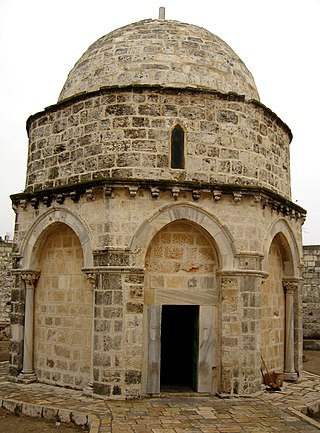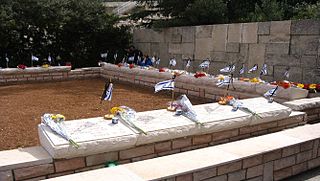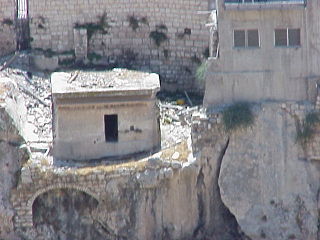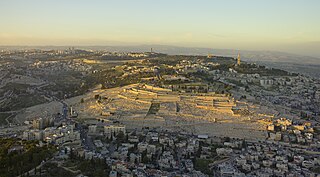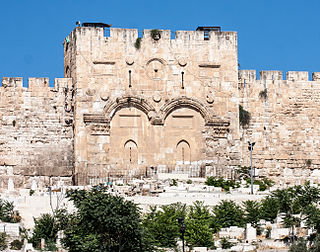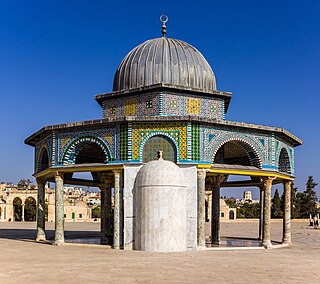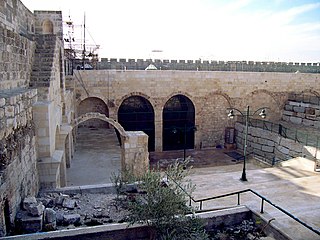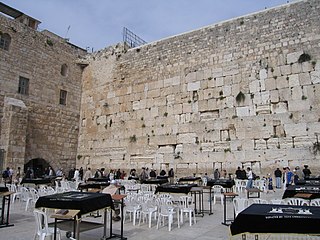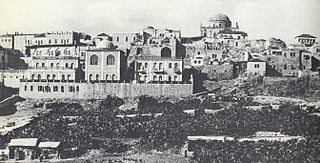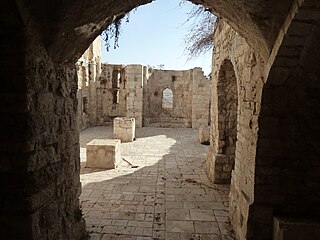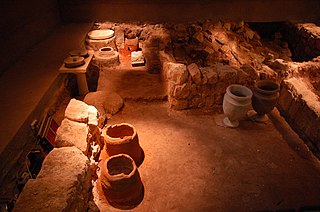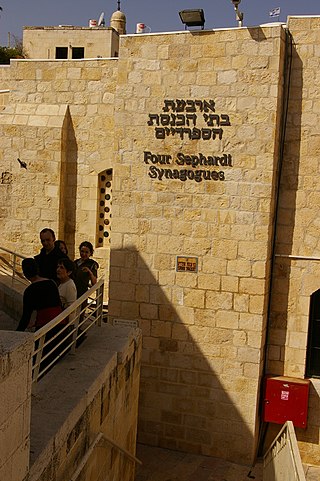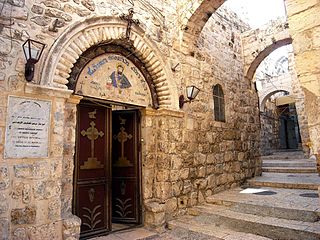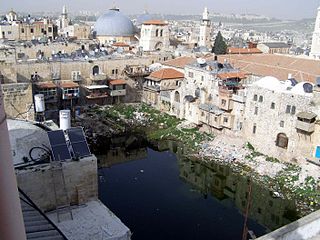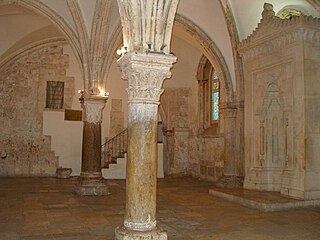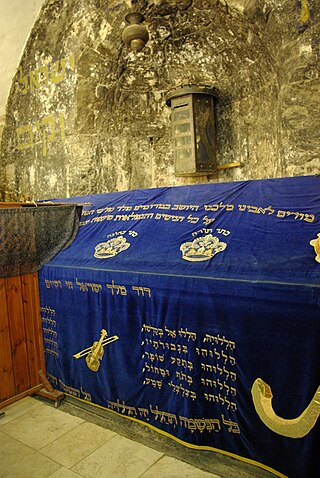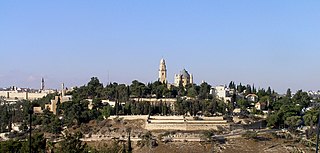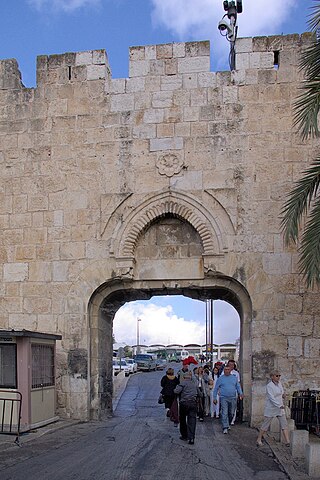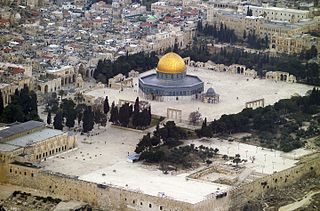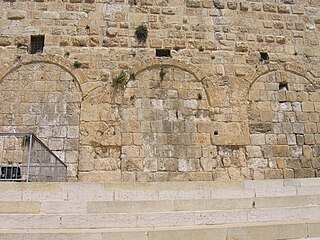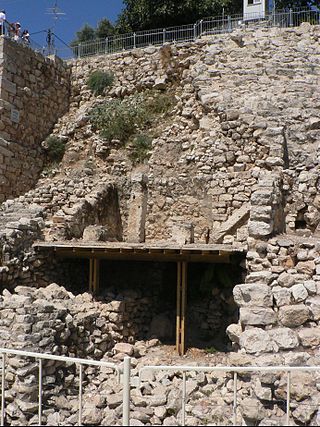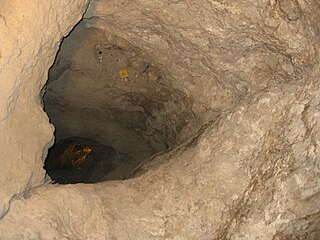Self-guided Sightseeing Tour #5 in Jerusalem, Israel
Legend
Guided Free Walking Tours
Book free guided walking tours in Jerusalem.
Guided Sightseeing Tours
Book guided sightseeing tours and activities in Jerusalem.
Tour Facts
10.8 km
489 m
Experience Jerusalem in Israel in a whole new way with our self-guided sightseeing tour. This site not only offers you practical information and insider tips, but also a rich variety of activities and sights you shouldn't miss. Whether you love art and culture, want to explore historical sites or simply want to experience the vibrant atmosphere of a lively city - you'll find everything you need for your personal adventure here.
Activities in JerusalemIndividual Sights in JerusalemSight 1: Chapel of the Ascension
The Chapel of the Ascension is a chapel and shrine located on the Mount of Olives, in the At-Tur district of Jerusalem. Part of a larger complex, historically it started as part of a Christian church and monastery, which later became an Islamic mosque, Zawiyat al-Adawiya, and is located on a site traditionally believed to be the earthly spot where Jesus ascended into Heaven after his Resurrection. It houses a slab of stone believed to contain one of his footprints. This article deals with two sites; the Christian site of the Ascension, and the adjacent but separate mosque built over an ancient grave.
Sight 2: קבר אחים חללי הרובע היהודי
The Mass Grave for the Fallen of the Jewish Quarter is a mass grave on the Mount of Olives, near the Tombs of the Prophets, in Jerusalem, where 48 of the fallen soldiers of the Jewish Quarter who were killed in the War of Independence are buried.
Sight 3: Dominus Flevit Church
Dominus Flevit is a Roman Catholic church on the Mount of Olives, opposite the walls of the Old City of Jerusalem in Israel. During construction of the sanctuary, archaeologists uncovered artifacts dating back to the Canaanite period, as well as tombs from the Second Temple and Byzantine eras.
Sight 4: Church of Mary Magdalene
The Church of Mary Magdalene is an Eastern Orthodox Christian church located on the Mount of Olives, directly across the Kidron Valley and near the Garden of Gethsemane in Jerusalem.
Sight 5: Tomb of Zacharias
The Tomb of Zechariah is an ancient stone monument in Jerusalem that is considered in Jewish tradition to be the tomb of Zechariah ben Jehoiada. It is a few meters from the Tomb of Absalom and adjacent to the Tomb of Benei Hezir.
Sight 6: Monolith of Silwan
The Monolith of Silwan, also known as the Tomb of Pharaoh's Daughter, is a cuboid rock-cut tomb located in the Kidron Valley, in Silwan, Jerusalem dating from the period of the Kingdom of Judah. The Tomb of Pharaoh's Daughter refers to a 19th-century hypothesis that the tomb was built by Solomon for his wife, the Pharaoh's daughter. The structure, a typical Israelite rock-cut tomb, was previously capped by a pyramid structure like the Tomb of Zechariah. The upper edges of the monolith are fashioned in the shape of an Egyptian cornice. The pyramidal rock cap was cut into pieces and removed for quarry during the Roman era, leaving a flat roof. The tomb contains a single stone bench, indicating that it was designed for only one burial. Recent research indicates that the bench was the base of a sarcophagus hewn into the original building.
Sight 7: Tomb of the Sons of Hezir
The Tomb of Benei Hezir, previously known as the Tomb of Saint James, is the oldest of four monumental rock-cut tombs that stand in the Kidron Valley, adjacent to the Tomb of Zechariah and a few meters from the Tomb of Absalom. It dates to the period of the Second Temple. It is a complex of burial caves. The tomb was originally accessed from a single rock-cut stairwell which descends to the tomb from the north. At a later period an additional entrance was created by quarrying a tunnel from the courtyard of the monument known as "the Tomb of Zechariah". This is also the contemporary entrance to the burial complex.
Sight 8: Mount of Olives Information Center
The Mount of Olives or Mount Olivet is a mountain ridge in East Jerusalem, east of and adjacent to Jerusalem's Old City. It is named for the olive groves that once covered its slopes. The southern part of the mount was the Silwan necropolis, attributed to the elite of the ancient Kingdom of Judah. The western slopes of the mount, those facing Jerusalem, have been used as a Jewish cemetery for over 3,000 years and holds approximately 150,000 graves, making it central in the tradition of Jewish cemeteries. Atop the hill lies the Palestinian neighbourhood of At-Tur, a former village that is now part of East Jerusalem.
Sight 9: Golden Gate
The Golden Gate or Gate of Mercy is the only eastern gate of the Temple Mount, and one of only two Gates of the Old City of Jerusalem that used to offer access into the city from the East side.
Sight 10: Dome of the Chain
Dome of the Chain is an Islamic free-standing domed building located adjacently east of the Dome of the Rock in the al-Aqsa Mosque compound in the Old City of Jerusalem. It is one of many small buildings that can be found scattered around the Al Aqsa Mosque. Its exact historical use and significance are under scholarly debate. Erected in 691–92 CE, the Dome of the Chain is one of the oldest surviving structures at the al-Aqsa Mosque compound.
Sight 11: Solomon's Stables
Solomon's Stables, or Al-Marwani Mosque, is an underground vaulted prayer hall in the Al-Aqsa mosque compound in Jerusalem. It is 600 square yards in area, and is located under the southeastern corner of the compound, 12.5 m (41 ft) below the courtyard, and features twelve rows of pillars and arches. In December 1996 the Jerusalem Waqf renovated the area. The area was known to the Crusaders as Solomon's Stables, and to earlier Muslims as the Old Mosque.
Sight 12: Western Wall
The Western Wall (Hebrew: הַכּוֹתֶל הַמַּעֲרָבִי, romanized: HaKotel HaMa'aravi, lit. 'the western wall', is an ancient retaining wall of the built-up hill known to Jews and Christians as the Temple Mount of Jerusalem. Its most famous section, known by the same name, often shortened by Jews to the Kotel or Kosel, is known in the West as the Wailing Wall, and in Islam as the Buraq Wall. In a Jewish religious context, the term Western Wall and its variations is used in the narrow sense, for the section used for Jewish prayer; in its broader sense it refers to the entire 488-metre-long retaining wall on the western side of the Temple Mount.
Sight 13: Ohel Yitzchak Synagogue
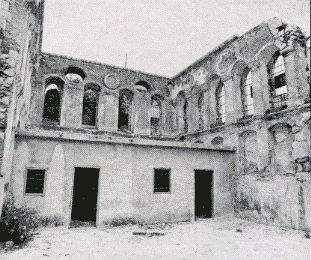
The Ohel Yitzchak Synagogue, also known as the Shomrei ha-Chomos Synagogue and the Ungarin Shul, is an Orthodox Jewish congregation and synagogue, located in the Muslim Quarter of the Old City of Jerusalem, Israel. It was built as a yeshiva in the 1870s by Kolel Shomrei HaChomos, an organization of Hungarian Jews, but was abandoned after the riots of 1938. Although the building was destroyed after 1948, it was reopened in October 2008 after acquisition by a Religious Zionist group and subsequent refurbishment.
Sight 14: Shuvu Banim Yeshiva
Shuvu Banim is a yeshiva in the Old City of Jerusalem with 1,500 students. It was founded in 1978 in Bnei Brak by Rabbi Eliezer Berland, a convicted sex offender and fraudster who is still the rosh yeshiva. The yeshiva was declared a cult by The Israeli Center for Cult Victims in 2018.
Sight 15: Wilson's Arch prayer hall
Wilson's Arch is the modern name for an ancient stone arch in Jerusalem, the first in a row of arches that supported a large bridge connecting the Herodian Temple Mount with the Upper City on the opposite Western Hill. The Arch springs from the Western Wall and is still visible underneath later buildings set against the Wall. The name Wilson's Arch is also used to denote the hall that it partially covers, which is currently used as a synagogue. This hall opens towards the Western Wall Plaza at the Plaza's northeast corner, so that it appears on the left of the prayer section of the Western Wall to visitors facing the Wall.
Sight 16: Yeshivat HaKotel
Porat Yosef Yeshiva is a Sephardic yeshiva in Jerusalem, with locations in both the Old City and the Geula neighborhood. The name Porat Yosef means "Joseph is a fruitful tree" after the biblical verse Genesis 49:22.
Sight 17: Church of Saint Mary of the Germans
The Church of Saint Mary of the Germans was a Catholic church, built in Romanesque style, now in ruins, located in the Old City of Jerusalem on the northeast slope of Mount Zion.
Sight 18: Burnt House
The Burnt House Museum is a museum presenting an excavated house from the Second Temple period. It is situated 6 m (20 ft) below current street level in the Jewish Quarter of the Old City of Jerusalem.
Sight 19: Tiferet Yisrael Synagogue
The Tiferet Yisrael Synagogue, most often spelled Tiferet Israel, also known as the Nisan Bak Shul, after its co-founder, Nisan Bak is a former prominent Hasidic Jewish congregation and synagogue, located in the Jewish Quarter of the Old City of Jerusalem, Israel. Designed by Nisan Bak, the former synagogue was completed in 1872 and partially destroyed in 1948.
Sight 20: Hurva Synagogue

The Hurva Synagogue, also known as Hurvat Rabbi Yehudah he-Hasid, is an Orthodox Jewish congregation and synagogue, located in the Jewish Quarter of the Old City of Jerusalem.
Sight 21: The Four Sephardic Synagogue
The Four Sephardic Synagogues are a complex of four adjoining synagogues located in the Jewish Quarter of the Old City of Jerusalem.
Sight 22: Cardo
Get Ticket*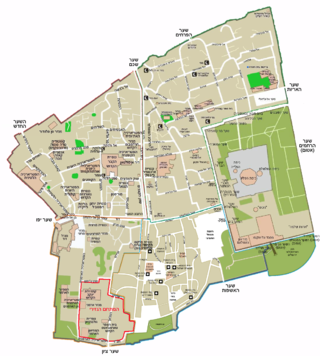
The Cardo was a central north-south oriented thoroughfare in Jerusalem during the Late Roman and Byzantine periods. Together with the east-west oriented Decumanus, it reflects typical Roman city planning. The term "Cardo" derives from the Latin word for "hinge," referring to role as the main north–south axis in Roman cities.
Sight 23: St. Mark's Monastery
The Monastery of Saint Mark the Evangelist and the Virgin Mary is a Syriac Orthodox monastery in the Armenian Quarter of the Old City of Jerusalem and residence of the Syriac Orthodox Archbishop of Jerusalem. It is believed to be located on the site of house of Mary, mother of Mark the Evangelist; Syriac Christians believe that it was the place where the Last Supper was shared by Jesus and the Twelve Apostles, where the Apostles hid after the Passion and Crucifixion of Jesus, and where Jesus appeared to the Apostles after the Resurrection. The place claims to be the first church in Christianity. The monastery consists of the main church of Saint Mark and an adjacent chapel of Saint Behnam.
Sight 24: Syriac Church of St. Mark
The Monastery of Saint Mark the Evangelist and the Virgin Mary is a Syriac Orthodox monastery in the Armenian Quarter of the Old City of Jerusalem and residence of the Syriac Orthodox Archbishop of Jerusalem. It is believed to be located on the site of house of Mary, mother of Mark the Evangelist; Syriac Christians believe that it was the place where the Last Supper was shared by Jesus and the Twelve Apostles, where the Apostles hid after the Passion and Crucifixion of Jesus, and where Jesus appeared to the Apostles after the Resurrection. The place claims to be the first church in Christianity. The monastery consists of the main church of Saint Mark and an adjacent chapel of Saint Behnam.
Sight 25: Maronite Church
Maronite Catholic Patriarchal Exarchate of Jerusalem and Palestine is an exarchate of the Maronite Patriarchate of the Maronite Church immediately subject to the Patriarchate of Antioch of the Maronites. In 2017 there were 504 members. It is currently governed by archeparch Moussa El-Hage, OAM.
Wikipedia: Maronite Catholic Patriarchal Exarchate of Jerusalem and Palestine (EN)
Sight 26: Hizkyahu’s Pool
Hezekiah's Pool, or the Patriarch's Pool, located in the Christian Quarter of the Old City of Jerusalem, was once a reservoir forming part of the city's ancient water system.
Sight 27: Jaffa Gate
Join Free Tour*Jaffa Gate is one of the seven main open gates of the Old City of Jerusalem.
Sight 28: St. Toros Church
The Holy Thoros Church is an Armenian church in the Armenian district of Jerusalem, Israel. It is next door to the Church of St. Jacob. More than 4,000 manuscripts are kept in the Church
Sight 29: Zion Gate
Zion Gate, also known in Arabic as Bab Harat al-Yahud or Bab an-Nabi Dawud, is one of the seven historic Gates of the Old City of Jerusalem.
Sight 30: Cenacle
The Cenacle, also known as the Upper Room, is a room in Mount Zion in Jerusalem, just outside the Old City walls, traditionally held to be the site of the Last Supper, the final meal that, in the Gospel accounts, Jesus held with the apostles.
Sight 31: David's Tomb
Get Ticket*David's Tomb is a site that, according to a Medieval tradition, is associated with the burial of the biblical King David. Historians, archaeologists and Jewish religious authorities do not consider the site to be the actual resting place of King David. It occupies the ground floor of a former church, whose upper floor holds the Cenacle or "Upper Room" traditionally identified as the place of Jesus' Last Supper and the original meeting place of the early Christian community of Jerusalem.
Sight 32: Mount Zion
Get Ticket*Mount Zion is a hill in Jerusalem, located just outside the walls of the Old City to the south. The term Mount Zion has been used in the Hebrew Bible first for the City of David and later for the Temple Mount, but its meaning has shifted and it is now used as the name of ancient Jerusalem's Western Hill. In a wider sense, the term Zion is also used for the entire Land of Israel.
Sight 33: Dung Gate
Get Ticket*The Dung Gate, also known in Arabic as the Silwan Gate and Mughrabi Gate, is one of the Gates of the Old City of Jerusalem. It was built as a small postern gate in the 16th century by the Ottomans, first widened for vehicular traffic in 1952 by the Jordanians, and again in 1985 by the Israeli authorities. The Dung Gate is a main passage for vehicles coming out of the Old City and for buses headed to the Western Wall.
Sight 34: Al-Aqsa Mosque
Al-Aqsa or al-Masjid al-Aqṣā is the compound of Islamic religious buildings that sit atop the Temple Mount, also known as the Haram al-Sharif, in the Old City of Jerusalem, including the Dome of the Rock, many mosques and prayer halls, madrasas, zawiyas, khalwas and other domes and religious structures, as well as the four encircling minarets. It is considered the third holiest site in Islam. The compound's main congregational mosque or prayer hall is variously known as Al-Aqsa Mosque, Qibli Mosque or al-Jāmiʿ al-Aqṣā, while in some sources it is also known as al-Masjid al-Aqṣā; the wider compound is sometimes known as Al-Aqsa Mosque compound in order to avoid confusion.
Sight 35: Hulda Tripple Gate
The Huldah Gates were one of the Gates of the Old City of Jerusalem leading into the Jerusalem Temple compound in the Hasmonean period and were named as such in the Mishnah. The term is currently being used for the remains of two later sets of gates, the Triple Gate and the Double Gate, known together as the Huldah Gates, built as part of the much extended Herodian Temple Mount, situated in Jerusalem's Old City. Both sets of gates were set into the Southern Wall of the Temple compound and gave access to the Temple Mount esplanade by means of underground vaulted ramps. Both were walled up in the Middle Ages.
Sight 36: Stepped Stone Structure
The Stepped Stone Structure is the name given to the remains at a particular archaeological site on the eastern side of the City of David, the oldest part of Jerusalem. The curved, 60-foot-high (18 m), narrow stone structure is built over a series of terraces. A casemate wall adjoins the structure from a northerly direction at the upper levels, and may have been the original city wall.
Sight 37: Warren's Shaft
Warren's Shaft is a vertical shaft next to the Gihon Spring, the main source of water of Bronze and Iron Age Jerusalem, discovered in 1867 by British engineer, archaeologist and military officer Charles Warren. The term is currently used in either a narrower or a wider sense:In the narrower, initial sense, Warren's Shaft is the almost vertical natural shaft leading down to a pool fed by the Gihon Spring. In the wider sense, as the Warren's Shaft system, it is the Bronze Age water system allowing protected access from the city to the Gihon Spring.
Sight 38: Givati Parking Lot dig
The Givati Parking Lot dig is an archaeological excavation located in Silwan in advance of building project commissioned by the El'ad Association. It is adjacent to the City of David archaeological site. The dig was conducted by Doron Ben-Ami and Yana Tchekhanovets of the Israel Antiquities Authority and underwritten by the City of David Foundation. While the IAA conducts the excavations, the project and site is managed by El'ad.
Sight 39: Robinson's Arch

Robinson's Arch was a monumental staircase carried by an unusually wide stone arch, which once stood at the southwestern corner of the Temple Mount. It was built as part of the expansion of the Second Temple initiated by Herod the Great at the end of the 1st century BCE. Recent findings suggest that it may not have been completed until at least 20 years after his death. The massive stone span was constructed along with the retaining walls of the Temple Mount. It carried traffic up from ancient Jerusalem's Lower Market area and over the Tyropoeon street to the Royal Stoa complex on the esplanade of the Mount. The overpass was destroyed during the First Jewish–Roman War, only a few decades after its completion.
Share
Disclaimer Please be aware of your surroundings and do not enter private property. We are not liable for any damages that occur during the tours.
GPX-Download For navigation apps and GPS devices you can download the tour as a GPX file.
